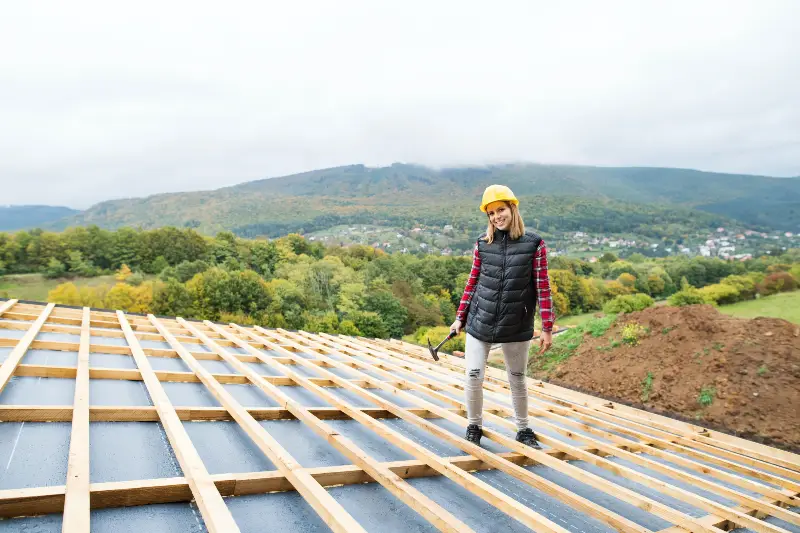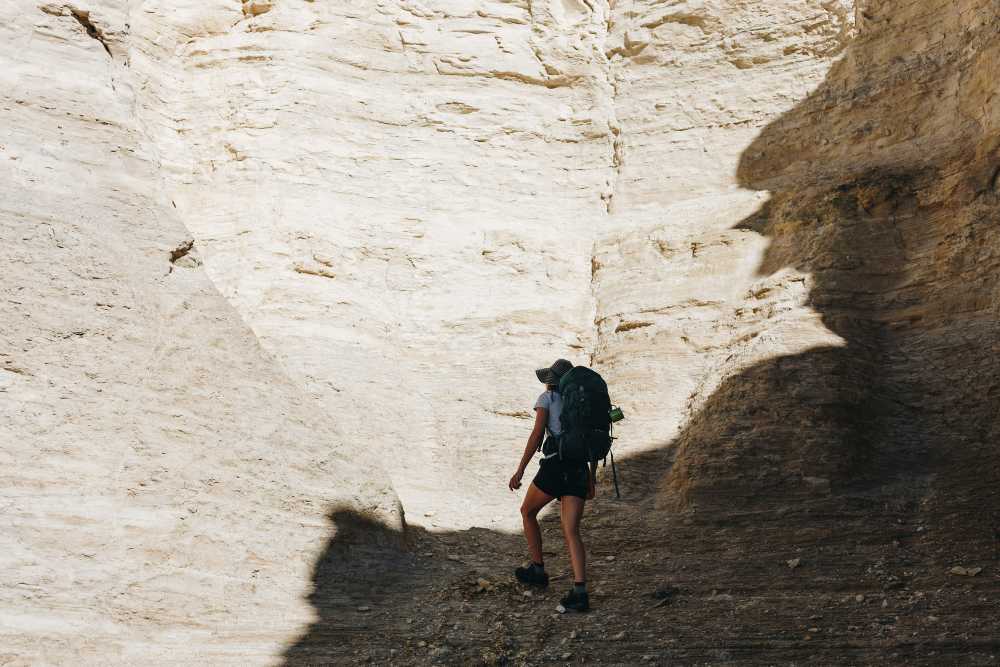Your roof’s main function is to shield your home from the elements, but it’s more than just a protective barrier.
As you can understand, different types of roof materials offer a variety of benefits, from energy efficiency and long-lasting durability to aesthetic appeal.
When picking roofing materials, consider their looks, durability, cost, your other needs, and how they’ll affect your home’s structure, as well as the overall climate where you live.
Here we’ll talk about 17 main types of roofing materials and their costs to help you choose the best option for your home.
1. Metal Roof
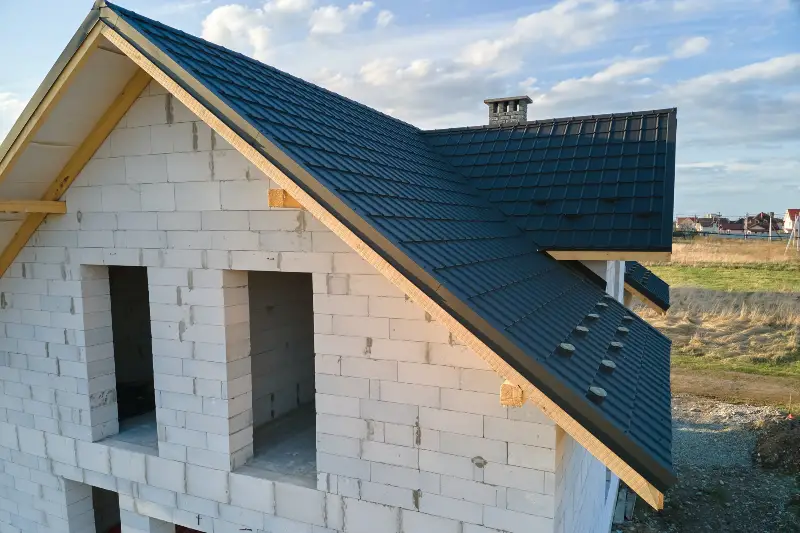
Price per Square Foot: $6 – $12
Metal roofing is an increasingly popular choice for homeowners due to its durability, energy efficiency, and versatility in style. Those who choose metal roofing are typically looking for a long-term investment, with metal roofs often lasting upwards of 50 years.
Metal roofs can be applied to a variety of roof designs, from steep-pitched to flat roofs, making them adaptable for different architectural styles. They reflect solar radiant heat, which can reduce cooling costs during hot seasons.
Available in options like steel, aluminum, and even premium copper, metal roofs offer different aesthetic choices suitable for various budget ranges.
In terms of sustainability, metal roofs can often be made from recycled materials and are 100% recyclable at the end of their lifespan, appealing to the environmentally-conscious homeowner.
Maintenance is relatively minimal, although some types may require periodic painting or coating to maintain their appearance and performance.
2. Clay Tiles
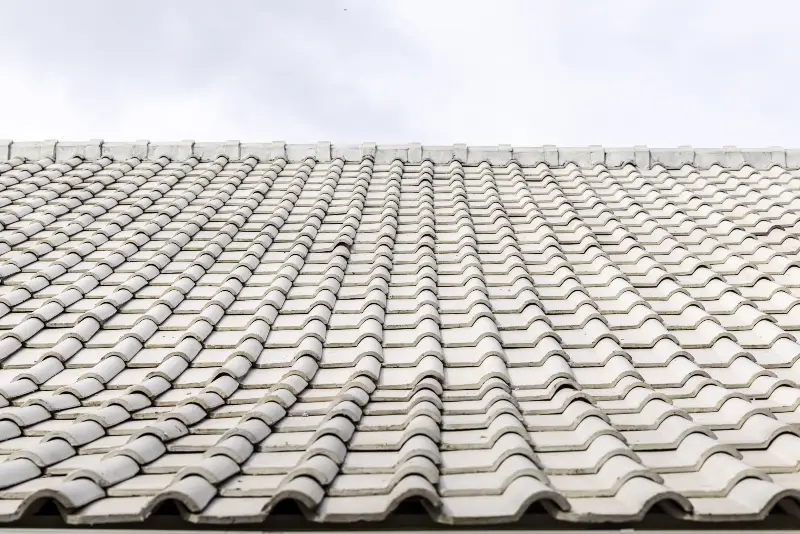
Price per Square Foot: $10 – $18
Clay tiles, recognizable by their traditional Spanish or terracotta styles, are chosen for their classic beauty and remarkable durability. This roofing material is ideal for homeowners desiring a distinct Mediterranean or Southwestern look for their home.
Their suitability extends to regions with hot climates or where salt air is present, as they are highly resistant to heat and corrosion. However, they are heavy and may require additional roof support, which should be taken into account during construction planning.
Clay tiles are one of the most durable roofing materials, with a lifespan that can exceed a century.
Nonetheless, their upfront cost can be higher than other options, and they may require professional installation. Regular maintenance is needed to check for cracked or broken tiles, especially after severe weather events.
3. Green Roofing
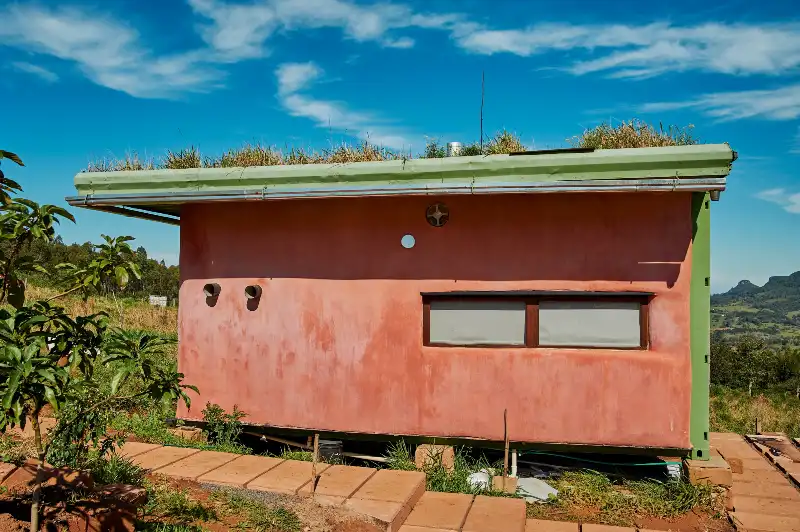
Price per Square Foot: $10 – $30
Green roofing, also known as a living roof, refers to a roof covered with plants, built over a layer that keeps water out. It’s used on flat or gently sloping roofs. Eco-conscious homeowners who want to reduce their environmental footprint typically opt for green roofs.
Green roofs are suitable for urban homes where additional outdoor space or gardens are desired. They provide excellent insulation, reduce rainwater runoff, and help combat the urban heat island effect.
However, they do require a robust structural support system due to their added weight and a specific layering system to manage water and plant life.
Initially, the installation cost is higher than traditional materials, but the long-term benefits, including potential energy savings and increased property value, can offset the upfront investment.
Moreover, they create a unique, natural habitat which can be aesthetically pleasing and beneficial for local wildlife.
4. Rolled Roofing
Price per Square Foot: $2 – $3
Rolled roofing is a mineral-surfaced oil-based asphalt product that comes in rolls. It’s most often chosen for low-slope residential roofs or outbuildings like sheds or shops.
This is one of the most cost-efficient roofing materials and is relatively easy to install, making it a popular choice for DIY projects. Rolled roofing offers a quick and practical solution for homeowners needing a roof in a time crunch or working within a tight budget.
Its life expectancy is much shorter than other roofing materials, typically lasting about 10 years, and it lacks the aesthetic appeal of more expensive roofing options. Regular monitoring for punctures or other damage is necessary to prevent leaks.
5. Concrete Tiles
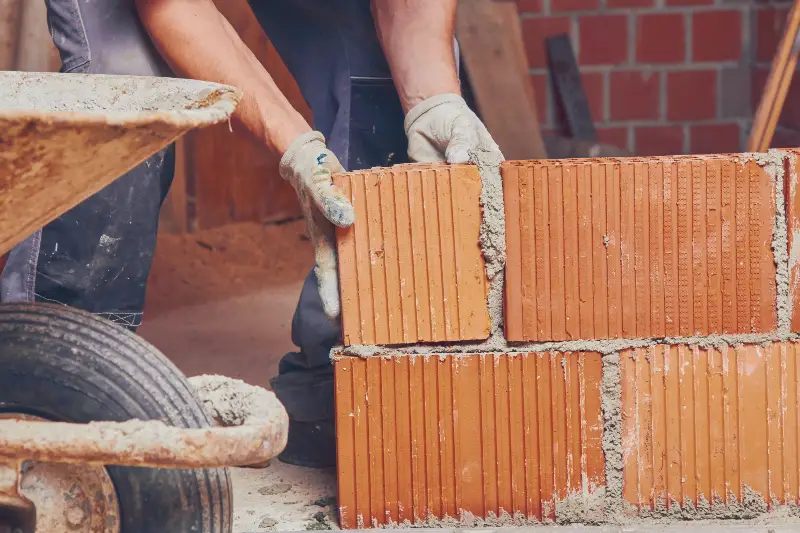
Price per Square Foot: $9 – $12
Concrete tiles present an alternative to clay tiles, offering similar aesthetics with potentially lower costs and increased versatility. Homeowners looking for the charm of tile without the price tag often go for concrete.
These tiles are suitable for most climates and are especially good in high wind or earthquake-prone areas due to their robustness.
Like clay tiles, concrete tiles are heavy and may require additional roof support. They are less porous than clay, which means they may better resist water infiltration.
Concrete tiles are also available in a wide range of colors and styles, including those that mimic wood shakes or slate tiles.
Although less expensive than clay tiles, they still offer a lifespan that can exceed 50 years with proper maintenance, which includes checking for broken tiles and potential moss growth.
6. Slate Roofing
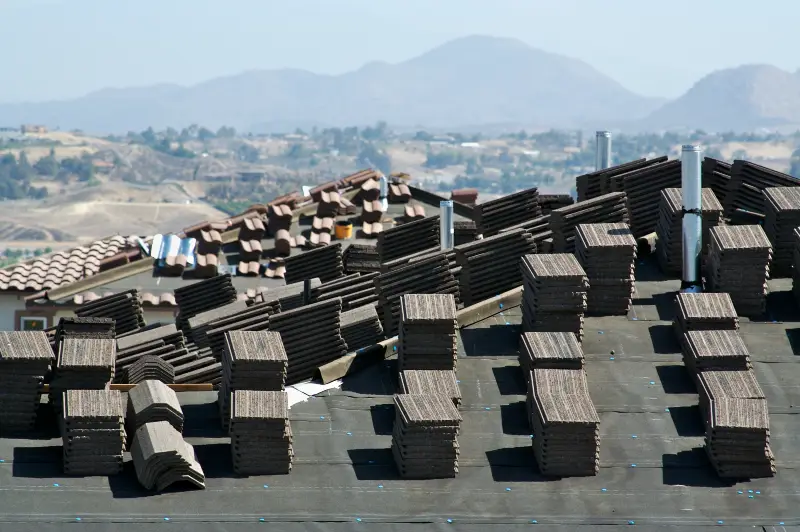
Price per Square Foot: $9 – $40
Slate roofing is synonymous with sophistication and unrivaled durability. Typically found on higher-end, luxury homes, slate is chosen by those who seek a natural look that improves with age and lasts for generations—up to 100 years or more.
Suitable for various climates, slate is impervious to weather extremes such as heavy snow, rain, or high winds.
Due to its weight, it requires a substantially strong roofing structure for support. Installation is a highly skilled craft, and as such, the labor costs for slate roofing can add to the already premium materials cost.
The beauty and longevity of slate are balanced by its cost, weight, and maintenance. Frequent inspection should be carried out to replace broken slates and ensure the integrity of the roof remains intact.
7. Solar Tiles
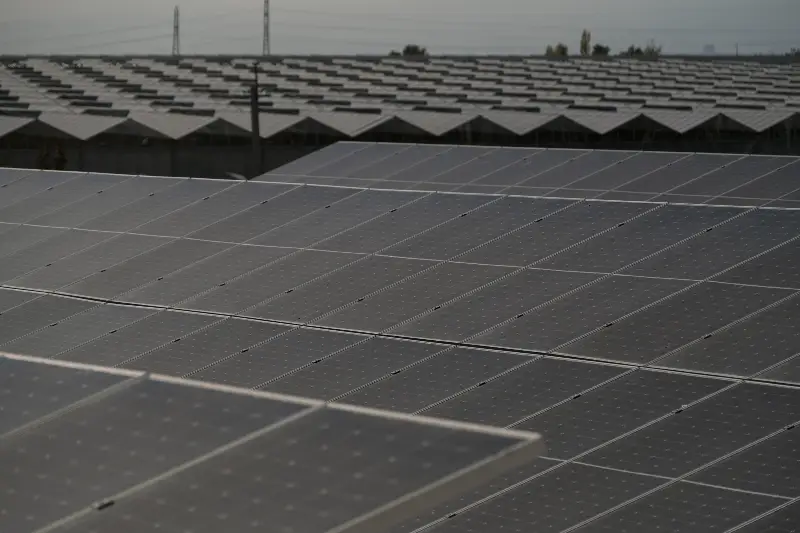
Price per Square Foot: $21 – $25
Solar tiles integrate the energy-generating power of solar panels into the aesthetic of traditional roofing materials. Homeowners looking to harness green energy without sacrificing style are turning to solar tiles, which are an excellent fit for sunny regions.
These tiles are suitable for roofs with a good amount of sun exposure and can be used in place of, or alongside, traditional roofing materials. While initial costs are high, the potential energy savings and tax incentives may balance this over time.
In comparison to traditional solar panels, solar tiles offer a seamless design but may be less efficient and more expensive.
They demand professional installation and an understanding that they may need to be replaced sooner than traditional solar panels. Nevertheless, they provide a dual purpose of protection and energy production.
8. Wood Shingles/Shakes
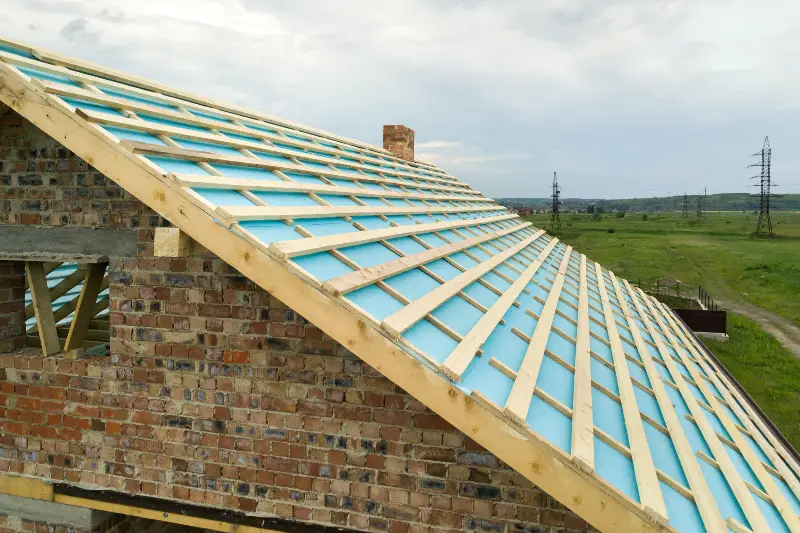
Price per Square Foot: $5 – $7
Wood shingles and shakes offer a timeless and natural aesthetic, with shingles being machine-cut and shakes hand-cut. These are ideal for those seeking a traditional or rustic look, especially in cottage or colonial-style homes.
They’re suitable for areas with moderate climates but may not be the best against fire-prone regions unless treated with a fire-resistant coating.
Wood roofs can last around 25 to 30 years with proper maintenance, which includes treating for mold and mildew and checking for damage or rot routinely.
The cost-effectiveness of wood shingles and shakes is a balance between aesthetic appeal and the need for regular maintenance.
9. Synthetic Composite Shingles
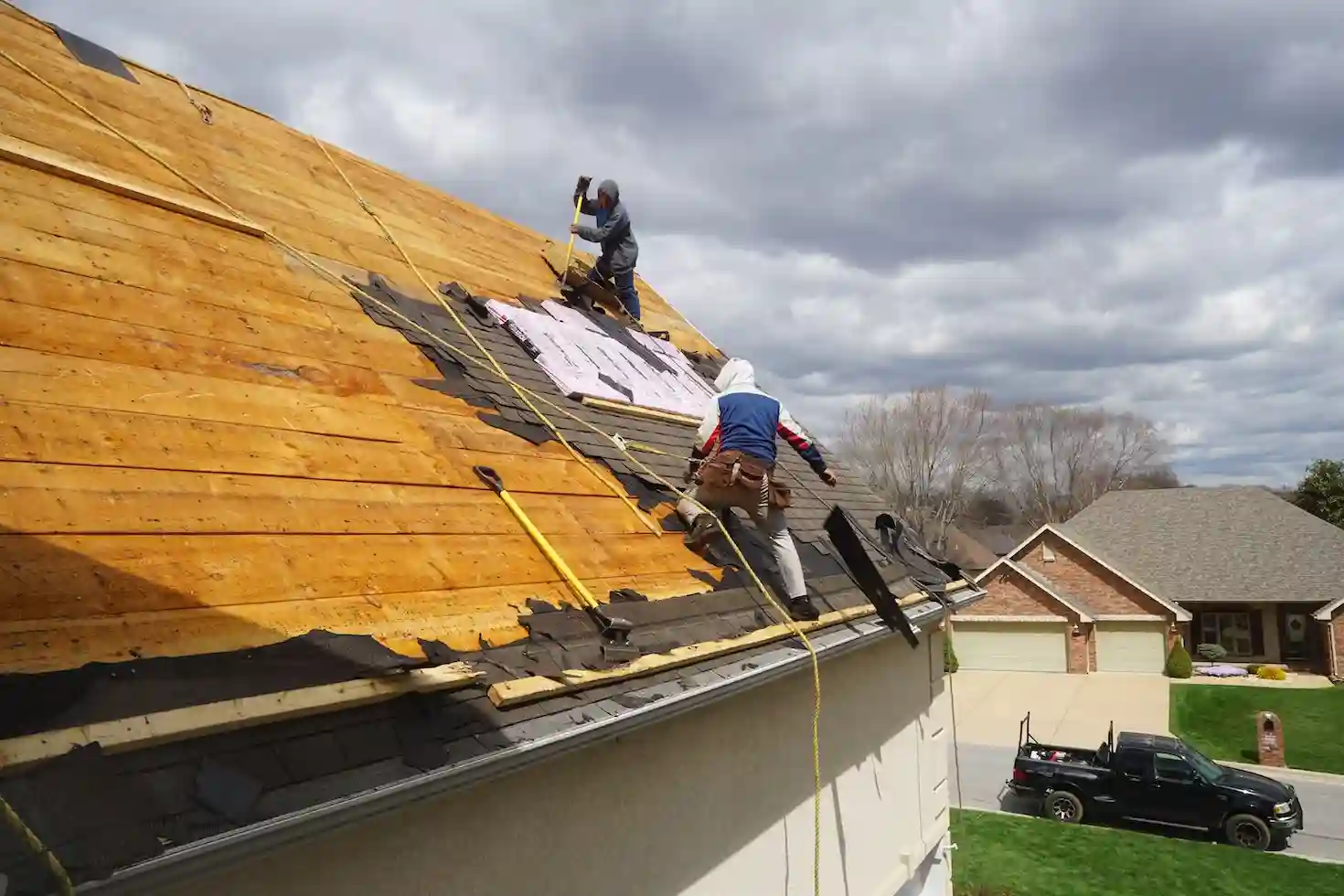
Price per Square Foot: $4 – $6
Synthetic composite shingles, made from engineered polymers and other materials, offer durability with the look of high-end roofing materials like slate or wood shakes. This is a great choice for homeowners seeking a balance between performance, cost, and aesthetics.
These shingles are lightweight and suitable for a wide range of climates. They often come with good impact resistance and are virtually maintenance-free. While they can mimic the look of more expensive materials, they are significantly easier to install and replace if necessary.
Composite shingles are an ideal mix for those looking for long-term performance without the weight or cost of traditional materials, offering around 30-50 years of lifespan.
10. Asphalt Shingles
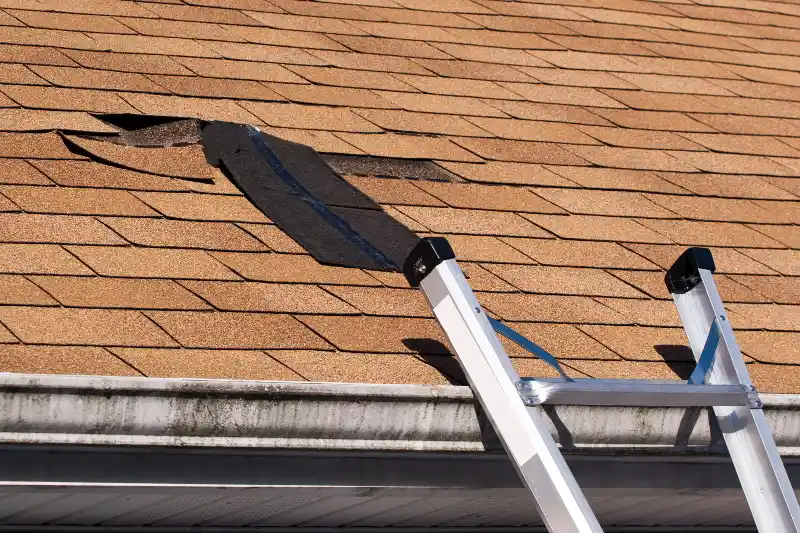
Price per Square Foot: $1 – $5
Asphalt shingles are the most popular roofing material in the United States due to their cost-effectiveness and ease of installation. Homeowners who want to achieve a traditional look without a considerable investment often turn to asphalt.
These shingles are suitable for most residential buildings and come in a variety of colors and styles, from the basic 3-tab shingle to more upscale architectural shingles. They’re best suited for temperate climates but can be prone to damage from extreme weather conditions.
While asphalt shingles are relatively inexpensive upfront and easy to replace, they typically have a shorter lifespan, ranging from 15 to 30 years. Maintenance includes periodic inspections for cracking, curling, or loss of granules, and they may be less eco-friendly due to the manufacturing process.
11. Cedar Shake

Price per Square Foot: $6 – $9
Cedar shake roofing provides a distinctive and natural beauty that can add character and warmth to a home. Ideal for homeowners who appreciate the unique grains, textures, and colors that cedar wood provides, these shakes offer better insulation than typical asphalt shingles.
Cedar shakes are best suited for climates where the temperature fluctuates; the wood’s natural properties allow it to expand and contract without damage.
However, they are not recommended for extremely wet or humid areas unless properly treated with preservatives and are moderately more expensive than asphalt.
Maintenance for cedar shake roofs is more involved; they must be cleaned regularly to prevent growth of moss and mildew and may require preservative treatments throughout their lifespan, which averages around 30 years.
12. Membrane Roofing
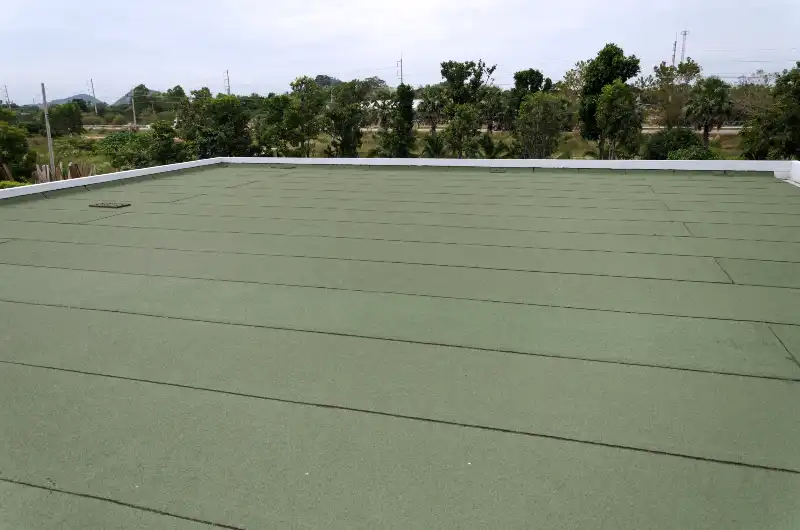
Price per Square Foot: $3 – $4
Membrane roofing refers to a variety of roofing systems that are designed for low-slope or flat roofs. Homeowners with this type of roof structure might opt for EPDM (rubber), PVC, or TPO membranes, which offer a waterproof and durable covering.
These materials are particularly well-suited for commercial roofing or residential flat roofs due to their leak-resistant seams and relative ease of repair and maintenance. They can also reflect UV rays, potentially lowering energy costs.
Membrane roofing systems are not typically used for steep-sloped roofs, and their lifespan can range from 20 to 35 years, depending on the material and quality of the installation.
While installation must be handled by professionals, it’s usually quicker and less labor-intensive than traditional pitched roof materials.
13. Standing Seam Metal Roofing
Price per Square Foot: $10 – $16
Standing seam metal roofing is noted for its clean, modern lines and is chosen by homeowners looking for a durable and sleek roof profile.
This type of metal roofing is constructed with continuous panels that run from the ridge of the roof down to the eaves, with seams between panels connected by raised fasteners.
This roofing is excellent for shedding snow and rain and is highly resistant to rust, making it suitable for a variety of climates. It’s particularly appealing for contemporary or industrial-style homes.
Though it’s on the pricier side initially, standing seam metal roofs require minimal maintenance and can last up to 50 years or more. They are also a sustainable choice as they are often made of recycled content and are fully recyclable at the end of their life.
14. Rubber Roofing
Price per Square Foot: $4 – $8 (EPDM)
Rubber roofing is generally made of EPDM (ethylene propylene diene monomer), a synthetic rubber material known for its durability. Homeowners with flat or low-slope roofs often choose rubber roofing due to its resistance to weathering and temperature extremes.
Perfect for climates with significant temperature swings, EPDM remains stable and flexible when exposed to heat, cold, and moisture. The material’s black color, however, can absorb heat, potentially increasing cooling costs unless coated with a reflective material.
Rubber roofing is one of the more affordable flat roof materials and is relatively straightforward to install. Its lifespan ranges from 20 to 35 years with proper maintenance, which includes inspections for punctures, seams, and flashing details.
15. Modified Bitumen Roofing
Price per Square Foot: $3 – $6
Modified bitumen roofing is an evolution of asphalt roofing. It is made by adding polymers to asphalt to improve its performance and durability. Homeowners with low-slope or flat roofs might select this material for its combination of traditional and modern roofing technologies.
Suitable for both residential and commercial buildings, modified bitumen is applied in layers to enhance its waterproof and insulating qualities. It’s often chosen in climates with fluctuating temperatures since it can expand and contract without damage.
Maintenance generally involves checking for cracks and blisters in the material. Although it requires professional installation, the life expectancy of a modified bitumen roof is about 20 years, which makes it a mid-range option in terms of both cost and
durability.
16. Built-Up Roofing (BUR)
Price per Square Foot: $3.50 – $7
Built-Up Roofing (BUR) is one of the oldest and most reliable materials for flat roofs or those with a very low pitch. This multi-layered roofing is created by alternating layers of asphalt or tar with supporting fabrics and finished with a layer of gravel or stone.
Homeowners opting for BUR generally have commercial or flat-roof residential buildings. It’s particularly well-suited for roofs that experience a high level of foot traffic or require outstanding durability against mechanical damage.
BUR systems are valued for their proven track record of resilience against the elements and excellent waterproofing characteristics.
While they can be heavy and require a strong structural support system, they provide superb insulation and can last 15 to 30 years with appropriate maintenance, including regular inspections and debris removal.
Conclusion
Replacing a roof or choosing materials for a new house can be a challenging process. Each roofing material presents its unique set of benefits and costs, which must be weighed by homeowners considering a replacement or a new installation.
It’s crucial to evaluate factors such as climate, the structure of your home, aesthetic desires, budget, long-term benefits, maintenance requirements, when choosing the best option for your roofing needs.
You can also consult with roofing professionals to discuss the best options for your specific situation to ensure that your new roof meets all of your expectations.

